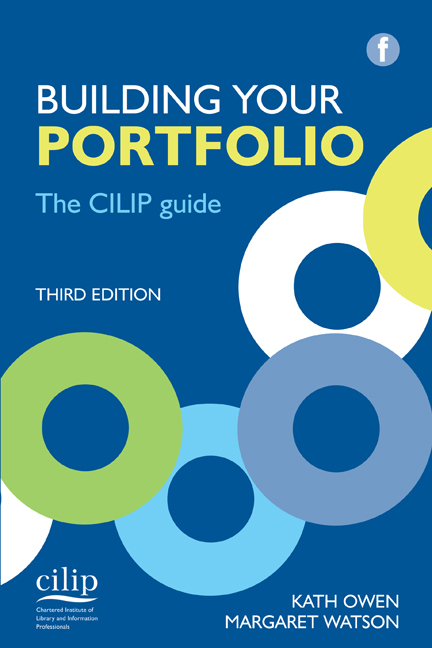Book contents
- Frontmatter
- Contents
- Contributors
- Foreword
- Acknowledgements
- 1 Introduction and getting started
- 2 Assessment criteria
- 3 Working with a mentor
- 4 Reflective writing
- 5 The curriculum vitae
- 6 The Professional Knowledge and Skills Base
- 7 Evaluative statements
- 8 Supporting evidence
- 9 The final steps
- Bibliography and references
- Websites
- Index
5 - The curriculum vitae
Published online by Cambridge University Press: 08 June 2018
- Frontmatter
- Contents
- Contributors
- Foreword
- Acknowledgements
- 1 Introduction and getting started
- 2 Assessment criteria
- 3 Working with a mentor
- 4 Reflective writing
- 5 The curriculum vitae
- 6 The Professional Knowledge and Skills Base
- 7 Evaluative statements
- 8 Supporting evidence
- 9 The final steps
- Bibliography and references
- Websites
- Index
Summary
What is a CV?
A curriculum vitae (CV) may be defined as the story of your life but it is also an important statement about how you view yourself and a place for the projection of that view to others. Most of us need to compile a CV at some stage in our career, usually to apply for a new job or for a promotion. There are many books and websites giving advice on the preparation of a CV for these purposes. Much of this advice is useful if you are compiling a CV for the first time. The general rule is that you need to compile a CV as soon as you leave education. You can store copies of your CV electronically. Regularly review your CV to ensure that it is up to date and be prepared to re-present it to match the particular purposes and audiences that arise. Keeping your CV up to date is especially important as it is much easier to record important events or changes in your career as they happen than try to recall them from memory months or years later! Even if you are asked to complete an application form and not send a CV, your CV, if up to date, should provide most of the information you need for filling out the form.
The CV in your Portfolio
Compiling your full CV is probably the best place to start when you are preparing your Portfolio. It gives you an opportunity to record and review your knowledge and skills and to identify the key learning moments in your career to date. The CV in your Portfolio is slightly different from one you would normally use for a job or promotion. You are not restricted in length and you can annotate the entries. However, a word of caution: assessors will not be happy with extra long CVs; generally it is a good rule for them to be of two to four A4 pages, the final length dependent on the range of your experience.
Compiling your CV
General
Determining the style, layout and order of your CV is a personal choice but there are certain guidelines it is sensible to follow.
- Type
- Chapter
- Information
- Building Your PortfolioThe CILIP guide, pp. 41 - 54Publisher: FacetPrint publication year: 2015



